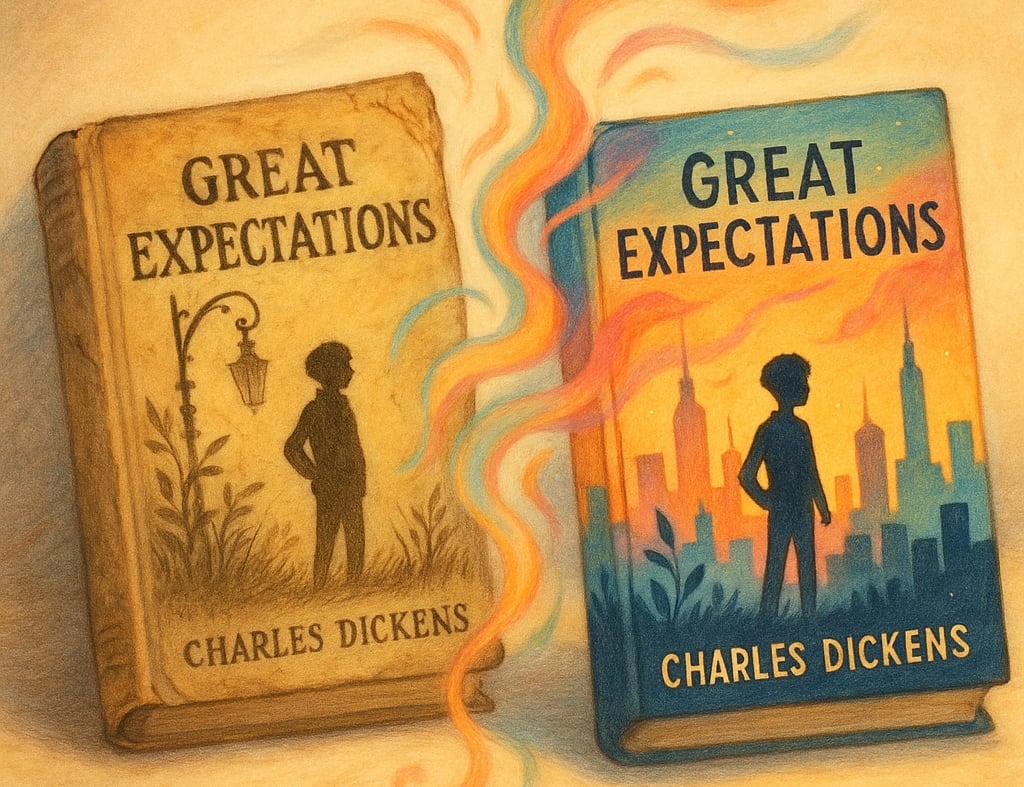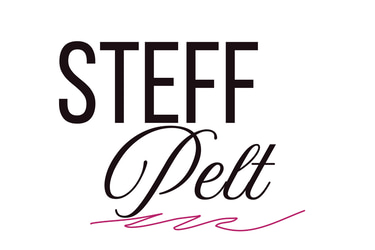Welcome to steff pelt!
Reviving Old Favorites: Simple Strategies to Give Classic Books a Modern Makeover
Give classic books a fresh twist with these easy, creative strategies. From updated covers to interactive elements and modern art, discover fun ways to make timeless stories feel brand new for today’s readers.
TIPS AND TOOLS
Penny Pelt
8/2/20255 min read


Reviving Old Favorites: Simple Strategies to Give Classic Books a Modern Makeover
There's something magical about classic books. They've stood the test of time, captivated generations of readers, and continue to offer timeless wisdom and entertainment. But let's be honest—sometimes those yellowed pages, outdated references, and archaic language can make classics feel more like homework than pleasure reading.
What if we could breathe new life into these literary treasures? What if we could preserve their essence while making them accessible and appealing to modern audiences? That's exactly what we're exploring today: practical strategies to give those beloved classics a fresh, contemporary makeover.
Why Revive the Classics?
Before diving into the how, let's briefly consider the why. Classic literature offers profound insights into human nature, society, and the human condition. These stories have endured because they speak to universal experiences. By modernizing them, we're not replacing the originals but creating bridges that invite new readers to discover these timeless tales.
As the publishing landscape evolves, these refreshed classics can:
Introduce literary treasures to younger generations
Make complex works more accessible to diverse audiences
Preserve cultural heritage in relevant, engaging formats
Create renewed interest in overlooked masterpieces
Selecting the Right Classics for Modernization
Not all classics are equally suited for a modern makeover. The most successful revivals typically share certain characteristics:
Focus on Universal Themes
Books that explore timeless themes like love, ambition, family dynamics, and moral dilemmas translate beautifully across eras. Jane Austen's exploration of social status and relationship dynamics in "Pride and Prejudice" remains relevant because these concerns still resonate with modern readers.
Consider Adaptability
Some classics are so tightly bound to their historical context that modernizing them risks losing their essence. War-specific narratives like "All Quiet on the Western Front" might lose their impact if divorced from their original setting, while stories about human relationships like "Great Expectations" can more easily shift to contemporary times.
Balance Recognition with Opportunity
The sweet spot often lies with works recognizable enough to generate interest but not so frequently modernized that your version faces overwhelming competition. Consider lesser-known works by famous authors or overlooked classics from diverse voices that deserve a wider audience.
Language Updates: Modernizing Without Sanitizing
One of the most delicate challenges in reviving classics lies in updating the language without losing the author's voice or the period's flavor.
Thoughtful Language Revisions
Rather than a wholesale rewrite, consider:
Simplifying overly complex sentence structures while maintaining the rhythm
Replacing obscure vocabulary with more accessible terms
Clarifying dated references with brief explanations
Updating offensive terminology while acknowledging historical context
Annotation and Context
Sometimes, the best approach isn't changing the original text but surrounding it with helpful context:
Add footnotes explaining cultural references, historical events, or outdated terms
Include a glossary for period-specific vocabulary
Provide a thoughtful introduction that frames the work for contemporary readers
Create reading guides that help navigate challenging sections
Visual and Design Makeovers
Never underestimate the power of presentation. The visual elements of a book can dramatically influence how readers perceive and engage with the content.
Cover Redesigns That Pop
A striking cover design serves as the first invitation to potential readers:
Use bold, contemporary typography that hints at the content
Consider artistic styles that bridge classic and modern aesthetics
Feature symbolic elements that capture the essence of the story
Avoid clichéd period imagery unless reimagined in a fresh way
Interior Layout Enhancements
The reading experience itself can be transformed through thoughtful design:
Choose readable, contemporary fonts for body text
Create breathing room with generous margins and line spacing
Use chapter breaks and section dividers to create natural reading pauses
Consider adding thematic illustrations at chapter openings
Digital-First Considerations
For e-book editions, embrace the format's unique capabilities:
Enable adjustable font sizes and styles for accessibility
Include hyperlinked endnotes and references
Consider subtle animations or interactive elements where appropriate
Design for both dark and light reading modes
Creative Reimagining Strategies
Sometimes the most effective revival involves reimagining core elements while preserving the heart of the story.
Setting Transplants
Shifting the setting to contemporary times can make themes immediately relatable:
Transport "Romeo and Juliet" from Renaissance Verona to rival modern neighborhoods
Reimagine "The Great Gatsby's" commentary on wealth and aspiration in today's influencer culture
Transform "Frankenstein's" exploration of scientific ethics to address genetic engineering or AI
Character Modernization
Update characters to reflect contemporary social dynamics:
Expand limited female roles into fully realized, autonomous characters
Diversify the cast to reflect modern multicultural realities
Reconsider stereotyped portrayals with nuance and complexity
Update occupations and social positions to modern equivalents
Format Experiments
Some classics find new life in entirely different formats:
Transform epistolary novels into stories told through emails, texts, or social media posts
Adapt dense narratives into graphic novels that visualize complex scenes
Consider serialized digital releases that mirror how many classics were originally published
Supplementary Content: Adding Value
Modern editions can offer more than just the text itself.
Educational Companions
Include historical context essays that situate the work in its time
Add author biographies that connect personal experiences to themes in the work
Provide reading group questions that prompt deeper engagement
Create timelines of relevant historical events
Multimedia Enhancements
For digital editions or companion websites:
Include audio pronunciations of difficult names or terms
Add image galleries of period-appropriate settings, clothing, or artifacts
Create maps that trace character journeys or story locations
Offer read-along audio options with professional narration
Practical Publishing Considerations
Before embarking on your revival project, attend to these practical matters:
Rights Status Research
Verify public domain status, which varies by country
Investigate if adaptations require permissions from estates or publishers
Consider trademark issues for character names in heavily merchandised classics
Format Selection
Choose publishing formats based on your target audience:
Print editions for schools, book clubs, and collectors
E-books for convenience and enhanced features
Audiobooks for commuters and multitaskers
Web-based versions for maximum accessibility
Marketing Angles
Position your revival to stand out:
Highlight connections between classic themes and current events
Create comparison graphics showing "then vs. now" elements
Partner with educators to develop teaching resources
Build social media campaigns around "rediscovering" forgotten classics
Success Stories: Modern Classic Revivals
Looking for inspiration? Consider these successful modernizations:
Pride and Prejudice to Bridget Jones's Diary: Helen Fielding's reimagining captured Austen's romantic comedy in 1990s London
Shakespeare's plays by the Royal Shakespeare Company: Modern settings with original text that proves the Bard's timelessness
Sherlock Holmes in "Elementary" and "Sherlock": Victorian detective skills applied to contemporary mysteries
Hogarth Shakespeare series: Commissioned leading authors to retell Shakespeare's works as modern novels
Start Your Classic Revival Project
Breathing new life into classic literature isn't just about preservation—it's about connection. Each thoughtful revival creates a bridge between generations, between cultures, and between different ways of seeing the world.
Whether you're a publisher looking to refresh your backlist, a teacher seeking to engage reluctant readers, or simply a book lover wanting to share favorites in accessible ways, these strategies offer a starting point for your own classic revival journey.
The most successful modernizations balance respect for the original with the courage to reimagine. They don't merely translate old stories into contemporary language—they rediscover what made these works powerful in the first place and find fresh ways to convey that power to new audiences.
What classic would you most like to see reimagined for today's readers? The possibilities are as endless as the treasures waiting on dusty library shelves.
info@steffpelt.com
Some links on this site are affiliate links. This means that if you make a purchase through these links, I may earn a commission at no extra cost to you. These affiliations help me continue to create valuable content and share relevant recommendations. The majority of the commissions I receive come from Amazon. Thank you for your support!
